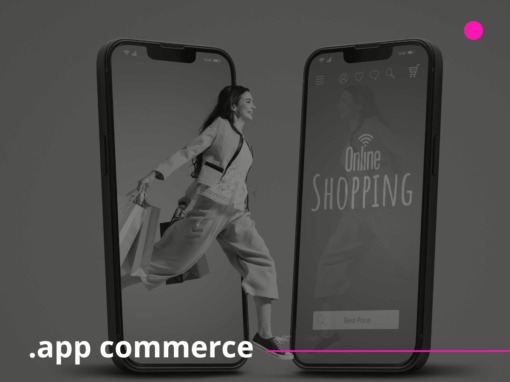In an increasingly competitive digital market, selling well is the goal of every operation. However, lasting success doesn’t rely solely on luck or isolated actions, but on a robust, data-driven strategy.
For a business operating through a sales app, the ability to collect, interpret, and act on metrics is what separates sustainable growth from temporary success. Instead of relying on impressions or intuition, the modern retailer must adopt an analytical mindset.
Your app is not just a storefront, but a consumer behavior laboratory. Below, we explore three key metrics that serve as a diagnostic tool to identify opportunities, fix bottlenecks, and ultimately supercharge your sales.
1. From Interest to Intent: The “Most Viewed vs. Most Sold Products” Analysis
This metric is one of the most valuable indicators of the purchase journey. Simply comparing what your customer looks at versus what they actually buy reveals one of retail’s biggest challenges: the gap between interest and conversion. When a product has a high number of views but a low sales rate, it signals a barrier in the conversion funnel.
A deeper analysis can reveal the root cause of the problem. The issue may lie in the product’s value proposition, such as a price misaligned with competitors or shipping costs that surprise and deter the customer. Alternatively, the problem could be in product presentation: unattractive photos, generic descriptions, or missing essential information can undermine consumer trust.
The strategic approach for this metric is to use the data as a guide for optimization. Test different prices, add videos or more high-resolution images, rewrite product descriptions to highlight key differentiators, and use urgency when appropriate to drive purchases. Every view that doesn’t convert is a lost opportunity; every data-driven adjustment is a step toward reclaiming it.
Recommended Tools
There are several tools available today to help you monitor these metrics in a structured way:
- Free: Google Analytics 4 (GA4) — Tracks page/product views and identifies which items attract clicks but don’t convert.
- Paid: Biso Digital — Monitors e-commerce KPIs in configurable dashboards and creates smart reports that detect discrepancies between views and sales. Automated insights highlight products with high views but low conversion, allowing you to act strategically.
- Paid: Mixpanel — A robust product analytics platform providing detailed funnel reports and cross-event analysis (e.g., views vs. purchases) with advanced segmentation.
2. The Path to Conversion: Optimizing Your App’s Conversion Rate
If the previous metric focuses on individual product performance, the app’s conversion rate evaluates the efficiency of the entire operation. It answers the crucial question: out of every 100 visitors, how many actually complete a purchase? A low conversion rate is a red flag that significant obstacles exist in the user journey.
Analyzing this number requires a close look at the complete purchase flow. Bottlenecks can occur at various points:
- Performance: Slow page loading is one of the biggest culprits. Each extra second increases the likelihood of a customer abandoning the app.
- Usability: Complicated registration with long forms or requests for irrelevant information can lead to drop-offs. Likewise, a multi-step or unintuitive checkout invites abandonment.
- Payment: Limited payment options or a poorly integrated PIX system can create critical friction points, especially in the Brazilian market.
The strategy is to make the journey as smooth and simple as possible. Simplify login, offer multiple payment methods, reduce the number of clicks to complete a purchase, and ensure the app is fast and lightweight. The goal is to remove all friction so that the customer can move from intent to action quickly and easily.
Recommended Tools
Some tools to help measure and analyze these metrics include:
- Free: Firebase Analytics (Google) — Free and natively integrates with iOS and Android apps, tracking conversions, checkout events, and abandonments in real time.
- Paid: Biso Digital — Centralizes behavioral and performance data, identifies bottlenecks (e.g., checkout abandonment or friction in the purchase flow), and generates alerts for negative deviations. This enables quick actions to optimize critical points in the conversion journey.
- Paid: Amplitude — Offers advanced user journey analysis, experimentation, and in-depth conversion reports, allowing precise identification of bottlenecks.
3. Your Brand’s Voice: Engagement Through Notifications
Push notifications are one of the most powerful tools for engagement and customer retention in an app. They represent your brand’s voice in the consumer’s hand. Engagement metrics—measured by sends, impressions, and clicks—act as a thermometer for the relevance and effectiveness of this communication.
A high click-through rate indicates your messages are valuable and compelling. Conversely, low engagement may mean your notifications are generic, irrelevant, or sent at the wrong time. The key to optimizing this metric is personalization.
Instead of sending a generic promotion to your entire audience, use behavioral data to create targeted messages. Remind a customer of an abandoned cart item, alert them about the arrival of a product they searched for, or offer an exclusive discount for a category they frequently browse. Relevance is what turns an alert into an invitation and ultimately a sale.
Recommended Tools
Some tools to help track and analyze this include:
- Free: Firebase — Allows you to create and track push notification campaigns, including metrics for sends, opens, and clicks.
- Paid: CleverTap — A complete engagement and retention platform that enables orchestration of push notifications, emails, SMS, and in-app messages with behavior-based personalization.
Monitoring and analyzing these three metrics consistently and in an integrated way transforms your App Commerce management. More than numbers, they serve as a strategic guide, illuminating the path to intelligent and sustainable growth, ensuring every decision is knowledge-based rather than assumption-based.
At Corebiz, we have extensive expertise in Mobile Commerce strategies, along with a proprietary SaaS app platform integrated with the leading analytics tools on the market. This solution allows you to have an exclusive app for your store, fully integrated with your e-commerce platform (VTEX, Wake, or Shopify). Learn more about the solution and request a free demo.




